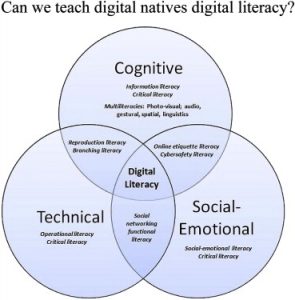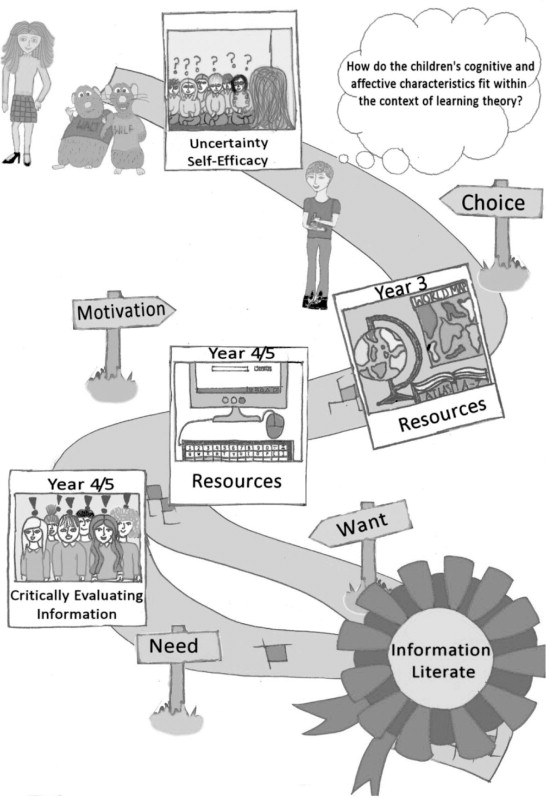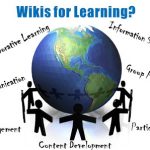The transition from the traditional library to the library learning commons model is a topic that comes with myriad sub-topics and issues, most of which can then be further divided into more sub-topics and so on and so forth. Some of the key words that I chose to pursue are inquiry learning, digital literacy, information literacy, lifelong learning and self-directed learning.
In first learning about the broader topic of the transition itself and the methodology behind it, there are two documents that I found to be particularly useful. The first document (which I have already linked in a previous blog post) was published in 2018 by the Government of Newfoundland and Labrador’s Department of Education and Early Childhood Development. Entitled “Extending the Classroom,” this curricular support document, while lengthy, covers all things from the rationale, standards of practice, and differences from the traditional library, to resources, FAQs and next steps. This is one of the most comprehensive documents that I have come across with respect to the actual transition to the Library Learning Commons model.
Government of Newfoundland and Labrador Department of Education and Early Childhood Development 2018: Extending the Classroom: The Library Learning Commons. Retrieved from:
A similar document, created by the British Columbia Teacher Librarians’ Association in 2018, also includes information about using the LLC to incite school-wide change. There is also an entire section devoted to the Virtual LLC which is another component of a fully functioning Library Learning Commons.
Edutopia. (2019, Sept 19). Putting Students in Charge of their Learning Journey. Retrieved from:
www.edutopia.org/video/putting-students-charge-their-learning-journey
Lisa Petro’s article “How to put self-directed learning to work in your classroom,” while dealing more with the classroom than a Library Learning Commons, offers some valuable insight into how self-directed learning fosters critical thinking. She states that, “the most valuable resource for engaging in self-directed learning is the ability to be aware of self and the world around us, and to inquire deeply about both.” She also says that in schools, we tend to encourage critical thinking by asking questions like the 5Ws. Petro argues that there are many more facets of thinking critically, such as “considering the credibility of content” and “being open to new sources of information and perspective.” What is particularly useful about this article is that it suggests ways in which an educator may encourage self-directed learning and critical thinking in the classroom such as promoting design thinking and vetting information.
Petro, Lisa. (2017). How to put self-directed learning to work in your classroom. Retrieved from:
https://www.edutopia.org/discussion/how-put-self-directed-learning-work-your-classroom
John C. Crawford and Christine Irving co-authored a book in 2013 entitled “Information Literacy and Lifelong Learning.” This is an extensive study about a project that took place in Scotland in 2007 called the Scottish Information Literacy Project. In this study, it was concluded that information literacy skills must be taught and developed early in a child’s schooling. The study states that it must start in primary school and “continue throughout education into the world of work – in other words, it needed to be a part of lifelong learning.” It defines information literacy and demonstrates what teaching information literacy at different ages and grade levels would look like. There are also several interesting graphics for us visual learners.

Crawford, John C. and Irving Christine. Information literacy and Lifelong Learning. Woodhead Publishing Ltd. 2013. Retrieved from:
Finally, Wan Ng’s “Can we teach digital natives digital literacy?” argues that it is indeed possible for digital natives to be “illiterate.” He outlines the differences in how digital natives learn compared to pre-1980-born students, stating that “digital natives are active experiential learners who like receiving information quickly, are multi-taskers, and parallel processors and prefer graphics first over texts.”

Ng, Wan. Can We Teach Digital Natives Digital Literacy? Computers and Education, 2012.
https://www-sciencedirect-com.ezproxy.library.ubc.ca/science/article/pii/S0360131512001005
*feature image from Crawford, John C. And Irving, Christine. Information Literacy and Lifelong Learning, Woodhead Publishing Ltd, 2013.

 Follow
Follow






Darcy
January 30, 2020 — 12:52 pm
You have curated and annotated a good list of resources to help you with your inquiry. I appreciate how you are thinking about the big picture but at the same time have explored connected subtopics. This will help you as we head toward the final project. You will have many options to choose your direction from.